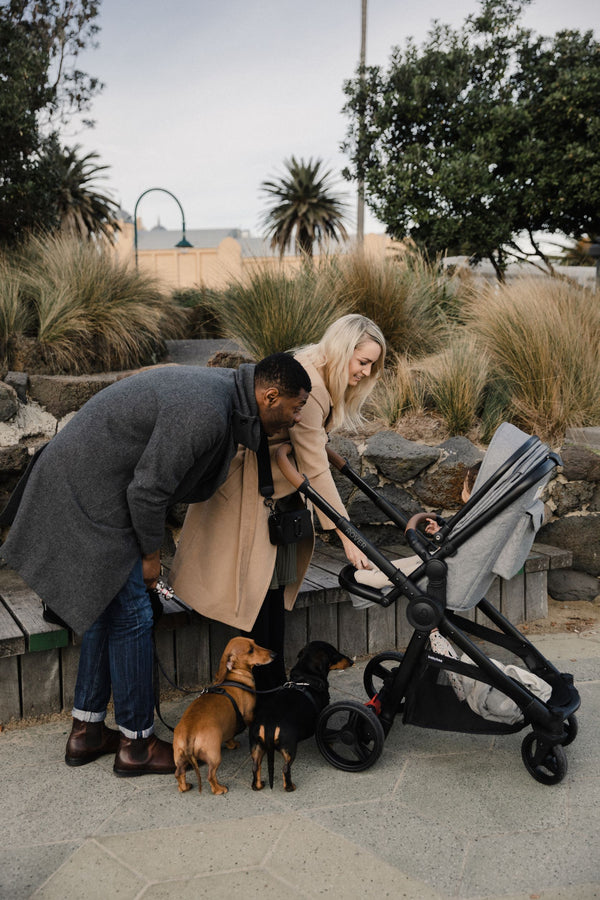Sure style trends, luxury materials, multiple configuration types and of course 'the fold'' are key selling features on any pram. However, one thing that trumps all of this is safety, which should be the number one consideration when purchasing a pram. At Babybee, we integrate safety with style - so you get the very best of both worlds.
But with so many pram brands on the market highlighting different safety features it can be difficult to navigate what is essential to your child's safety and what is marketing jargon.
To help you navigate the differences, we got the lowdown from Babybee's Quality Control Manager to discuss the four key safety features of any pram, as well as the four biggest myths about pram safety.
What are the key four safety features of any pram sold in Australia?
First and foremost, there are 4 key safety features of any pram sold in Australia in order to be compliant with the latest safety standard AS/NZS 2088:2013. These features are:
5-Point Safety Harness
